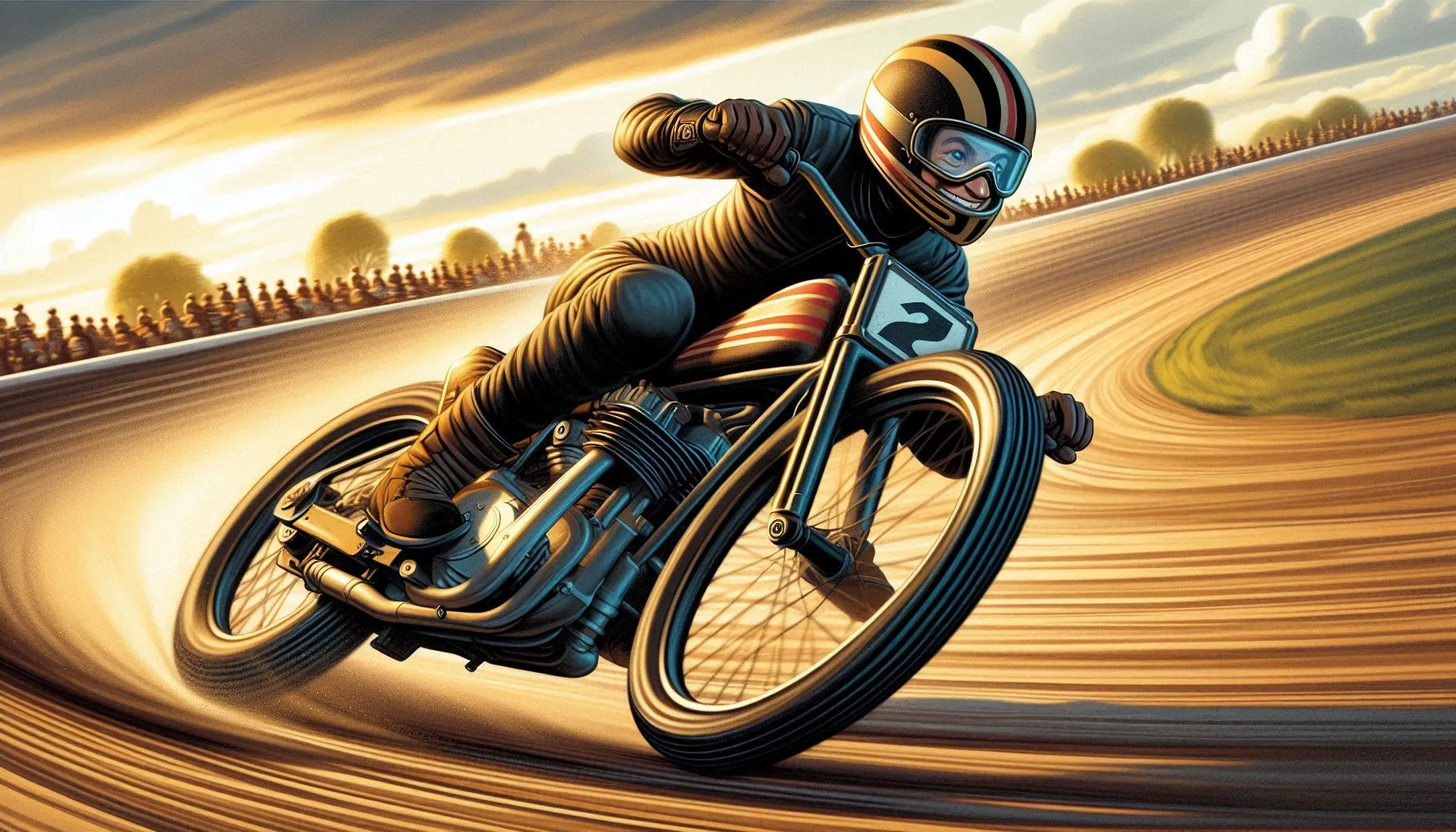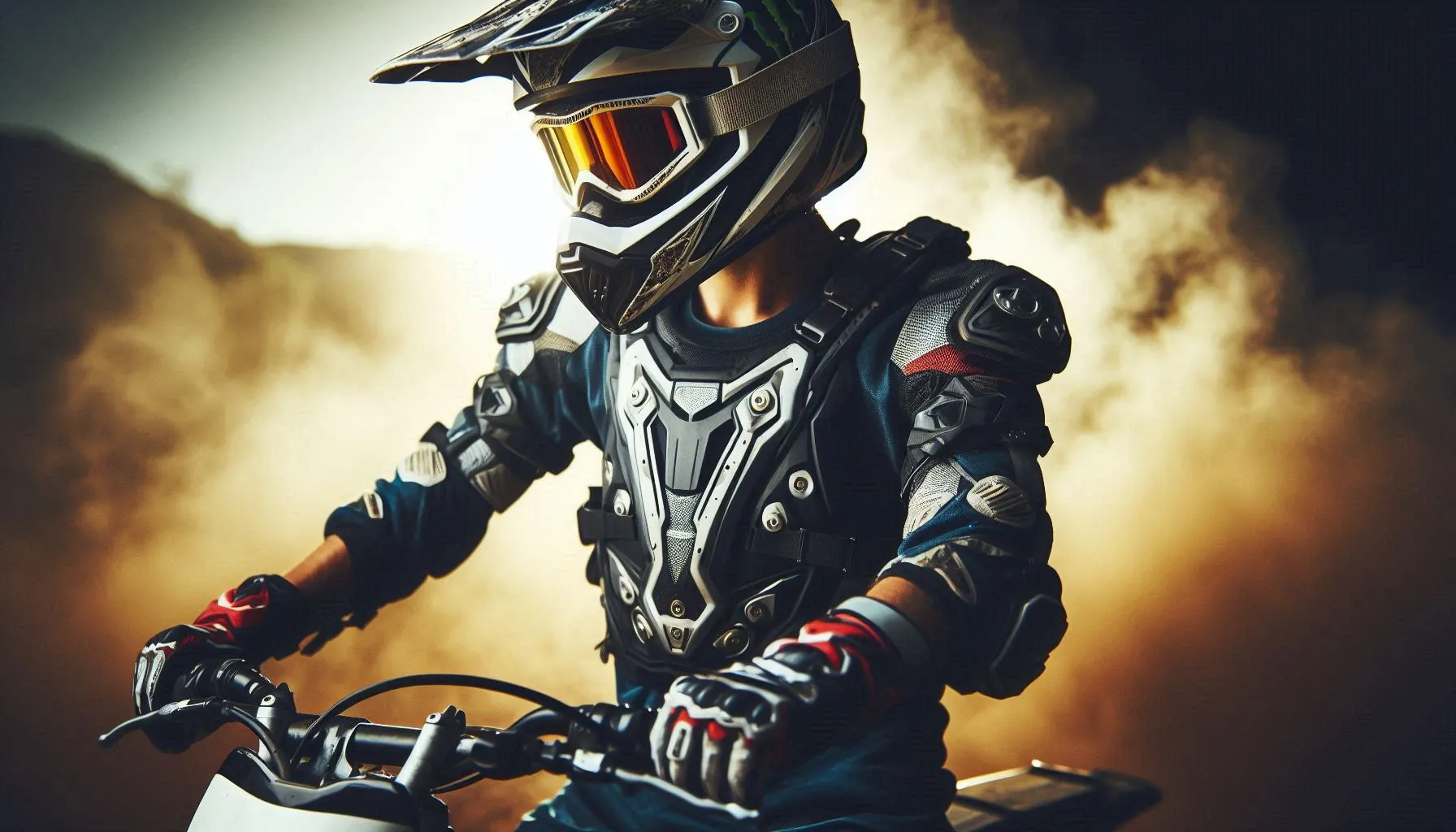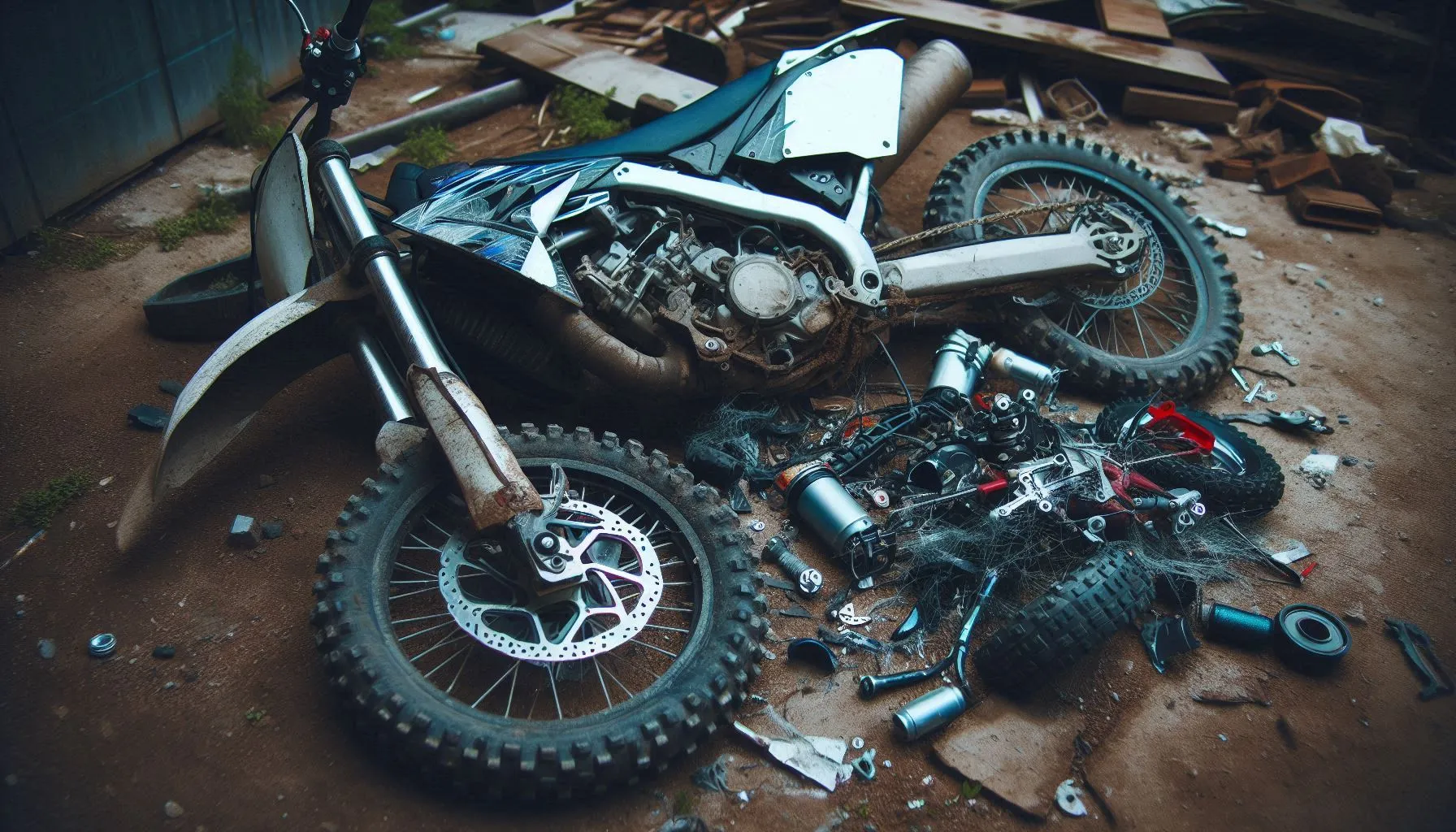
Dirt biking can be both thrilling and safe when riders prioritize safety and maintenance. By regularly checking the mechanical aspects of their dirt bikes, recognizing and correcting riding mistakes, and wearing appropriate safety gear, bikers can significantly diminish the likelihood of Dirt Bike Fails. Ultimately, embracing a safety-first attitude leads to more enjoyable and memorable dirt biking adventures.

Understanding Mechanical in Dirt Bikes fails
Dirt bikes, known for their agility and power, are complex machines comprising various mechanical components that can be susceptible to failures. A comprehensive understanding of these components is essential for riders to ensure their safety and enhance their riding experience. The main components that often encounter issues include clutches, chains, pistons, crankshaft bearings, brakes, shock linkage bearings, and tires. Each of these components plays a critical role in the bike’s overall performance and functionality.
Clutches are key to managing the bike’s power delivery. Common issues with clutches can stem from improper adjustment or wear over time, leading to decreased performance and potential dirt bike fails in controlling the bike during rides. Chains are another crucial component, and neglecting regular maintenance can cause them to wear out or even snap, resulting in loss of power transfer. Ensuring that the chain is lubricated and tensioned correctly is vital for preventing such mechanical failures.
Pistons and crankshaft bearings are equally significant; their failure can result in severe engine damage. Factors such as inadequate oil supply and overheating are common culprits that lead to these failures. Regular inspection and adhering to service intervals can mitigate such risks. Brakes, obviously, are critical for safety, and their components can wear down with use, leading to compromised stopping power—a situation that no rider wants to face. Similarly, shock linkage bearings are crucial for proper suspension function and can fail due to inadequate lubrication or excessive wear.
Lastly, tires are the only contact point between the bike and the ground. Their condition is paramount, as worn-out tires can lead to loss of traction and control. Inadequate maintenance and excessive use contribute to their deterioration. Therefore, maintaining each of these components is essential not only for the bike’s longevity but also for ensuring the rider’s safety. By understanding the mechanical components and the common causes of their failures, dirt bike riders can take proactive measures to prevent potential issues and mitigate the risks associated with mechanical malfunctions.
Common Mechanical Failures in dirt bike fails

Dirt bike enthusiasts must remain ever vigilant regarding the mechanical integrity of their machines. Understanding common mechanical failures is crucial for a safe and enjoyable riding experience. One of the prevalent issues riders’ faces is clutch failure. A malfunctioning clutch can significantly affect performance, making it difficult to change gears smoothly. Symptoms of clutch problems include slippage, unusual noises during operation, and difficulty engaging or disengaging gears. These issues typically arise from wear and tear or improper adjustment of the clutch cable, underscoring the importance of regular checks before riding.
Another common failure involves the chain, which is vital for transferring power from the engine to the wheels. Chain breakage can pose serious dangers, as it may cause loss of control during operation. Signs of a failing chain include unusual sounds, excessive vibration, or the chain slipping off the sprocket. Such failures are often a result of inadequate lubrication or tension, which further highlights why routine maintenance is essential. Regular inspection of the chain for signs of wear, rust, or damage can prevent dirt bike fails that arise from this crucial component.
Additionally, other critical parts that riders should monitor include brakes, tires, and suspension systems. Brake failure can result from worn-out brake pads or fluid leakage, which may lead to a complete loss of stopping power. Similarly, poor tire condition can compromise traction, heightening the risk of accidents. Lastly, suspension issues can impair handling and stability, as problems like leaks in the forks can affect performance. By familiarizing themselves with these common mechanical failures, riders can take proactive measures to ensure their dirt bikes remain in optimal condition, ultimately enhancing their overall riding experience.
Riding Mistakes That Lead to Accidents

In the world of dirt biking, rider error can often have more pronounced effects than mechanical failures. Understanding common riding mistakes is essential to enhancing safety and preventing accidents. One prevalent mistake is over-speeding. Riders sometimes misjudge their capabilities or the condition of the terrain, causing them to accelerate beyond their ability to react. Maintaining a manageable pace is crucial; it allows for better control and a quicker response to unforeseen obstacles.
Another significant factor contributing to dirt bike fails is poor braking techniques. Many riders fail to utilize the brakes effectively, either applying them too hard or too late. This can lead to loss of control, especially on steep descents or while navigating tight corners. Proper braking requires practice; riders should learn to use both front and rear brakes in conjunction while also being mindful of body positioning to maintain balance during deceleration.
Furthermore, misjudging jumps can result in serious accidents. This often occurs when a rider attempts a jump without fully assessing the landing area or their speed. A lack of situational awareness can lead to harsh landings, loss of traction, and possible injury. Riders should practice their jumping skills in safe conditions to increase their confidence and competency before attempting more challenging obstacles.
Additionally, neglecting to regularly evaluate one’s surroundings can exacerbate the risks associated with dirt biking. Hazards such as loose rocks, muddy patches, or sudden changes in terrain can appear unexpectedly. Riders who are not vigilant may soon find themselves in dangerous situations. By refining riding skills and enhancing situational awareness, dirt bikers can significantly reduce the likelihood of accidents stemming from their actions. Ultimately, investing time in improving these skills not only boosts individual safety but also contributes to a more enjoyable riding experience.
Safety Concerns: Understanding the Risks
Dirt biking is an exhilarating sport that offers the thrill of speed and the enjoyment of outdoor adventures. However, it is imperative for riders to acknowledge the potential risks associated with this activity. Accidents can lead to significant injuries, ranging from minor sprains to severe physical trauma. Awareness of these risks is essential for every dirt bike enthusiast to promote safety while riding.
One common type of injury resulting from dirt bike fails is ankle or wrist sprains, which often occur due to sudden impacts or falls. These injuries can sideline riders for weeks or even months, inhibiting their ability to engage in the sport they love. Additionally, tears of the anterior cruciate ligament (ACL) are prevalent in the dirt biking community. This injury typically stems from improper landing techniques or sharp turns, leading to long-lasting repercussions and extensive rehabilitation.
Another serious concern is the risk of broken collarbones. Such fractures often occur during falls when a rider instinctively uses their arms to break their fall. Broken collarbones can vary in severity and may require surgical intervention, resulting in long recovery times. Head injuries are also a significant worry; a common outcome of dirt bike accidents is concussions, which can have lasting effects on cognitive function and overall health. The lack of proper headgear can exacerbate these risks, emphasizing the necessity of using helmets and protective gear.
Moreover, rotator cuff tears can result from the repetitive motions associated with controlling a dirt bike. Riders frequently overlook the importance of proper technique and conditioning, which can lead to chronic pain and limit mobility. Collectively, these injuries underline the serious nature of risks involved in dirt biking. It is crucial for riders to comprehend these dangers and take proactive strategies to minimize the chance of accidents and injuries while enjoying their sport.
The Importance of Dirt Bike Safety Gear

Ensuring safety while riding dirt bikes is paramount, and one of the most effective ways to protect riders from injuries is through the use of appropriate safety gear. This gear plays a crucial role in mitigating risks associated with accidents, falls, and collisions commonly encountered in dirt biking. The proper equipment can significantly reduce the severity of injuries and promote safer riding practices.
Among the essential pieces of safety gear, helmets are a non-negotiable item for any dirt bike rider. A high-quality helmet is designed to absorb impact forces, protecting the head during an accident. It is important to select a helmet that meets safety standards and fits snugly to provide the optimum level of protection. Helmets equipped with features such as ventilation and a face shield offer riders added comfort and visibility, which can enhance their overall riding experience.
In addition to helmets, body armor is indispensable for safeguarding the rider’s torso and limbs. This type of gear includes chest protectors, knee guards, and elbow pads, which provide a protective barrier against abrasions, impacts, and punctures. The right body armor allows for greater mobility while ensuring comprehensive protection. Additionally, neck braces are vital accessories that can help prevent serious injuries to the cervical spine in the event of a crash, thereby reducing the risk of trauma.
Other safety gear, such as gloves and boots, also plays a significant role in promoting the rider’s safety. Gloves improve grip control and protect the hands from injuries, while boots provide ankle support and shield the feet from various dangers. Collectively, the combination of these safety items forms a robust defense against potential dirt bike fails, ensuring that riders can enjoy their experience with a reduced risk of serious injury.
Preventive Measures for Mechanical Failures

To ensure optimal performance and reliability of your dirt bike, regular maintenance is essential. By implementing a series of preventive measures, riders can significantly minimize the risk of mechanical failures, which often result from neglect or oversight. Engaging in routine checks allows bikers to identify potential issues before they escalate into significant problems, thus enhancing the safety and longevity of their vehicle.
A comprehensive maintenance schedule should include frequent inspections of key components such as the brakes, tires, and chain. Verifying that the brake pads are in good condition and adjusting the brake settings can prevent sudden failures. Tire pressure must also be checked regularly to ensure proper traction and handling, while maintaining the chain’s lubrication and tension is crucial in preventing premature wearing and mechanical complications.
Proper cleaning is another critical aspect of dirt bike maintenance. After every ride, debris and dirt can accumulate on various parts of the bike, affecting performance and leading to rapid deterioration. Regularly washing the bike and inspecting parts for damage can help prevent the buildup of grime that may cause mechanical troubles over time. Furthermore, paying attention to the air filter and replacing it as needed can ensure that the engine runs efficiently, reducing the risk of overheating or stalling.
Timely replacement of wear-and-tear components, such as the spark plug, clutch plates, and brake fluid, is equally important. Establishing a replacement schedule based on riding frequency can aid in avoiding unexpected failures during crucial riding moments. By adopting an approach focused on proactive care and regular maintenance, dirt bike owners can enhance the reliability of their vehicles, leading to a safer and more enjoyable riding experience, while minimizing the chances of dirt bike fails stemming from mechanical wear or damage.
Safe Riding Techniques: Minimizing Accidents
To reduce the risk of accidents when riding dirt bikes, it is crucial to adopt safe riding techniques that enhance control and efficiency. Central to these techniques is the understanding of speed control, which is vital for rider safety. Maintaining an appropriate speed helps in navigating various terrains and obstacles. Riders should practice throttle control, ensuring the bike does not accelerate too quickly, particularly when approaching challenging sections or obstacles. Smooth application of throttle can significantly mitigate the chances of losing control, reducing the likelihood of dirt bike fails.
Jump assessment plays an instrumental role in ensuring safety during rides. Before attempting any jumps, riders should familiarize themselves with the jump characteristics and landing zone. Evaluating the take-off and landing angles can aid in making informed decisions on whether to execute the jump. Moreover, riders must factor in their speed and body positioning when engaging in jumps. A well-timed jump with the right momentum can minimize the chances of landing awkwardly, which is commonly associated with accidents and dirt bike fails.
Body positioning is another critical aspect of safe riding. Riders should learn to shift their weight effectively, depending on the terrain and maneuver required. For instance, leaning forward during acceleration or downhill rides helps maintain balance, while shifting backward during descents can prevent the front tire from digging into the ground. Additionally, a low and centered body position can increase stability while cornering or navigating rough terrain.
Implementing these safe riding techniques—speed control, jump assessment, and proper body positioning—can dramatically decrease the incidence of accidents. By practicing these skills consistently, riders not only enhance their safety but also improve their overall performance on the dirt bike. Prioritizing safety will ensure that riders can enjoy their adventures while significantly reducing the risk of dirt bike fails.

Legal Considerations and Responsibilities
Engaging in dirt biking requires not only a passion for the sport but also a comprehensive understanding of the legal considerations associated with it. Riders are responsible for adhering to safety regulations, which are designed to reduce the risk of accidents and mechanical failures. Understanding these regulations is essential for ensuring both personal safety and the safety of others on the trails.
One of the primary legal aspects that dirt bikers should be aware of is the requirement for insurance. Most states mandate that riders have liability insurance to cover damages or injuries they may cause while riding. This insurance is critical, given that accidents involving dirt bikes can result in significant injury or property damage. Riders should consult with their insurance providers to ensure that they have appropriate coverage and fully understand the terms of their policy, including exclusions that may relate to dirt bike use.
Additionally, riders must be knowledgeable about local laws concerning where they can ride. Some areas have specific regulations governing the use of dirt bikes on public lands, private properties, or off-road venues. Violating these laws can result in fines, liability issues, or even confiscation of the bike. Hence, understanding the legal stipulations of riding locations is necessary to avoid any dirt bike fails associated with defiance of local statutes.
In terms of liability, it is crucial for dirt bikers to recognize their responsibilities when it comes to potential accidents. If a rider causes an injury to another person or damages property while riding, legal repercussions could follow. Therefore, being aware of the implications of riding practices and taking appropriate safety measures can significantly mitigate such risks, ensuring a safer and more legally compliant dirt biking experience.

Conclusion
In the exhilarating world of dirt biking, the thrill of the ride can sometimes overshadow the essential aspects of safety and maintenance. It is of utmost importance for riders to recognize the potential for mechanical failures and riding mistakes that can lead to accidents. Awareness of these risks is paramount in ensuring a safe and enjoyable dirt biking experience. Riders must be diligent in performing regular maintenance checks on their bikes, as neglecting this crucial aspect can result in significant dirt bike fails. Simple inspections of brakes, tires, and chains can prevent unnecessary incidents on the trail. Moreover, recognizing common riding mistakes can greatly enhance safety. Riders should always be mindful of their surroundings and wary of their skill limits. Practicing techniques, such as maintaining control while navigating obstacles and adjusting speed according to terrain, can significantly reduce the chance of dirt bike-related mishaps. Incorporating proper riding techniques not only improves a rider’s skill but also contributes to safer riding practices overall.
Additionally, the importance of wearing appropriate safety gear cannot be overstated. Helmets, padded clothing, and sturdy boots act as vital safeguards against potential injuries. By prioritizing safety gear, riders can minimize the impacts associated with falls or accidents, resulting in a more secure riding experience.
Comments (1)
The Ultimate Guide to Finding Custom Motorcycles for Sale Near Yousays:
September 29, 2024 at 10:03 pm[…] recognized for their radical aesthetic and personalization potential. Builders often strip these bikes down to the essentials, allowing for a highly customized look that can reflect the owner’s […]